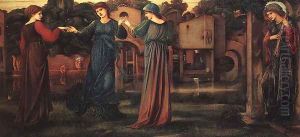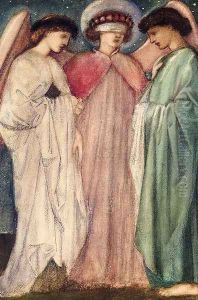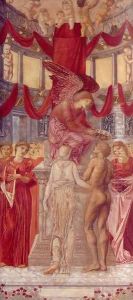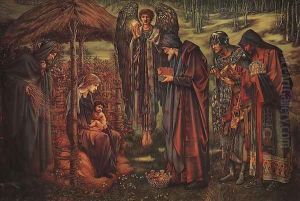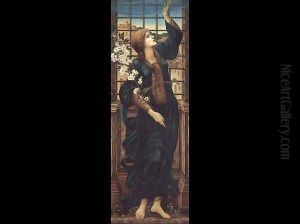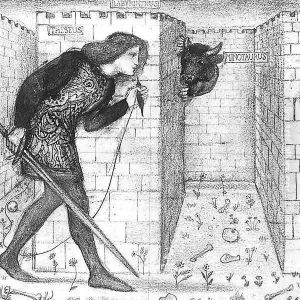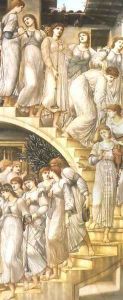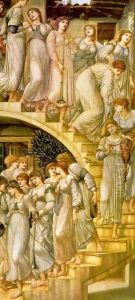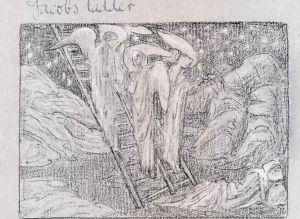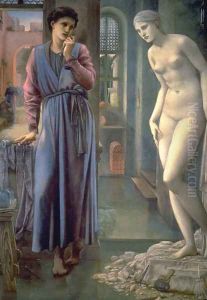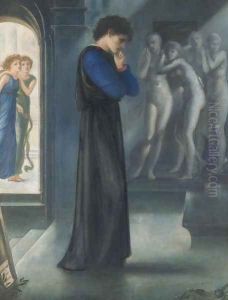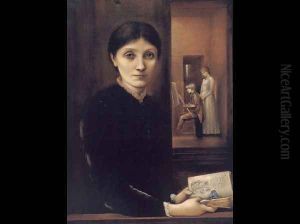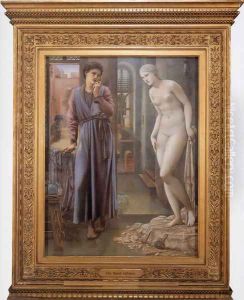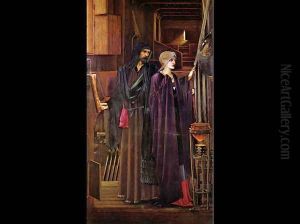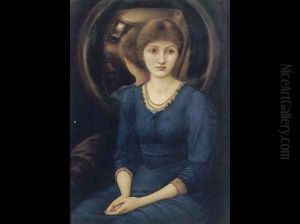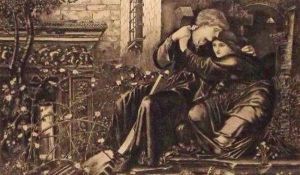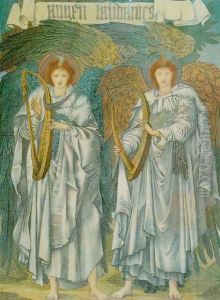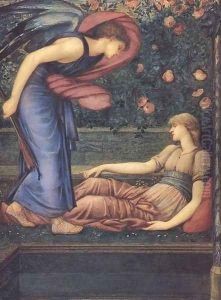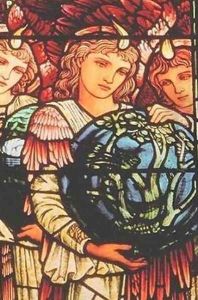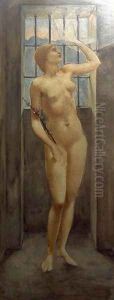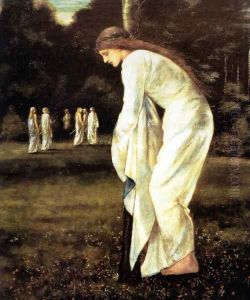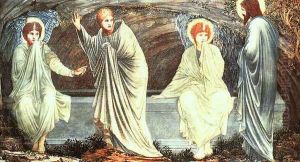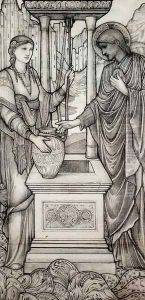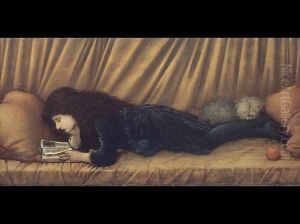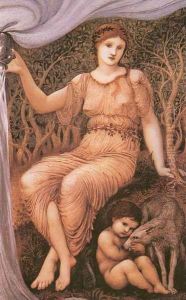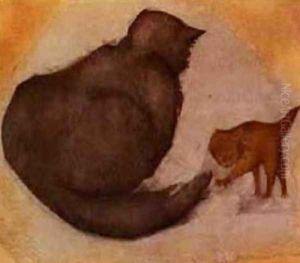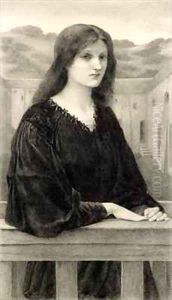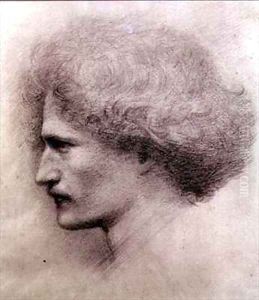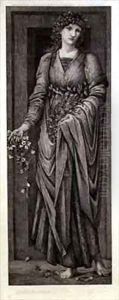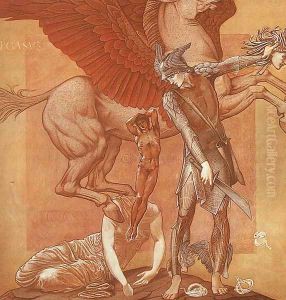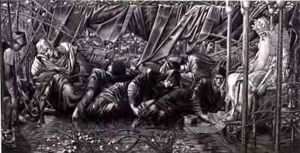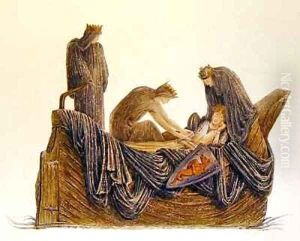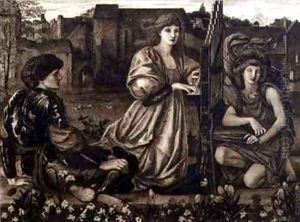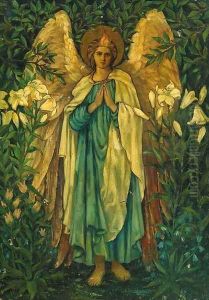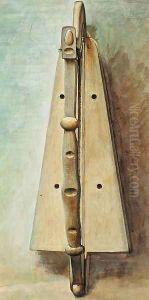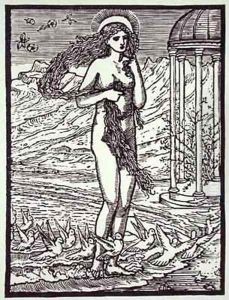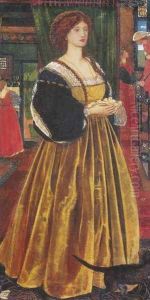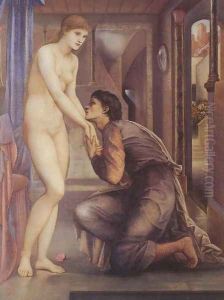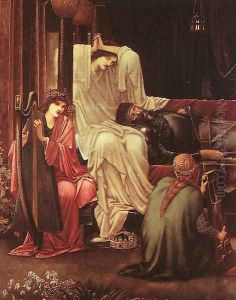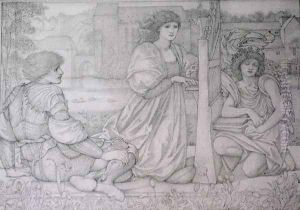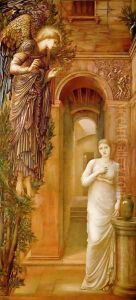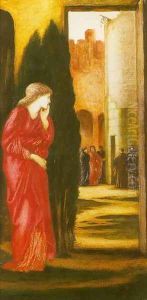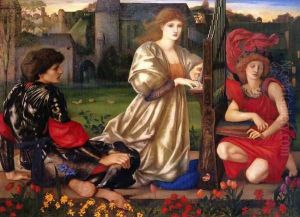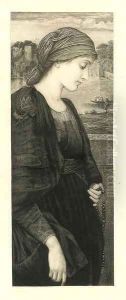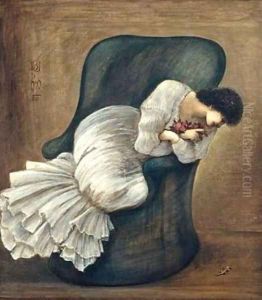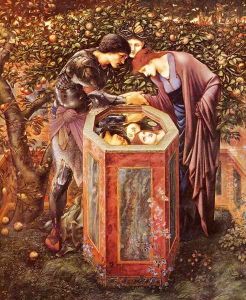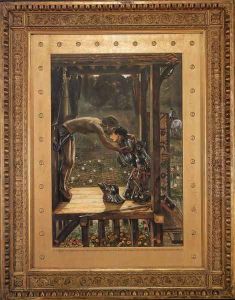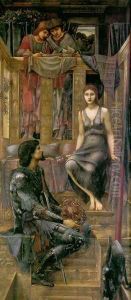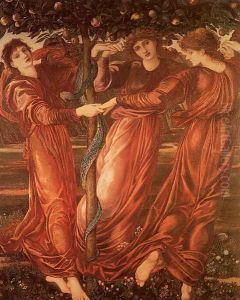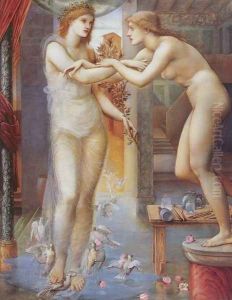Sir Edward Coley Burne-Jones Paintings
Sir Edward Coley Burne-Jones was a British artist and designer closely associated with the later phase of the Pre-Raphaelite movement. Born in Birmingham, England, on August 28, 1833, Burne-Jones attended Exeter College, Oxford, where he intended to enter the clergy. However, his life took a decisive turn when he met William Morris, with whom he would form a lifelong friendship and collaboration. Together, they became involved in the renewal of the arts and crafts movement, which sought to elevate the status of the decorative arts and crafts to that of fine arts.
Burne-Jones' early work was religious in nature, but as his style developed, he became known for his ethereal figures and a penchant for mythological and literary subjects. His paintings are characterized by their melancholic beauty, detailed ornamentation, and muted color palettes. In 1861, he became one of the original partners in Morris, Marshall, Faulkner & Co., which later became known as Morris & Co. Through this partnership, Burne-Jones contributed designs for stained glass, tapestries, and other decorative objects.
Notable works by Burne-Jones include 'The Beguiling of Merlin', 'The Golden Stairs', and the 'Briar Rose' series of paintings. His work was not limited to oil paintings; he was also a master of watercolors and a pioneer in the creation of fine art tapestries. His designs for stained glass windows can be found in churches throughout Britain and his tapestries and other works contributed to the international spread of the Arts and Crafts style.
Burne-Jones was also involved in the aesthetic movement, which emphasized art for art's sake, and his work often reflected his personal philosophy that art should be a source of enlightenment and joy. He was knighted by Queen Victoria in 1894, which was a significant recognition of his contribution to the visual arts.
Despite his success, Burne-Jones's work was sometimes met with controversy, particularly for his depictions of languid, sensual figures that contrasted sharply with the moralistic tone of the Victorian era. Nevertheless, his influence on the art world was significant, and he played a key role in the development of European Symbolism.
Sir Edward Coley Burne-Jones passed away on June 17, 1898. His legacy continues to be celebrated for its visionary approach to art and its impact on future generations of artists. His work remains an integral part of British art history and is held in high esteem for its originality, depth of emotion, and exquisite craftsmanship.
